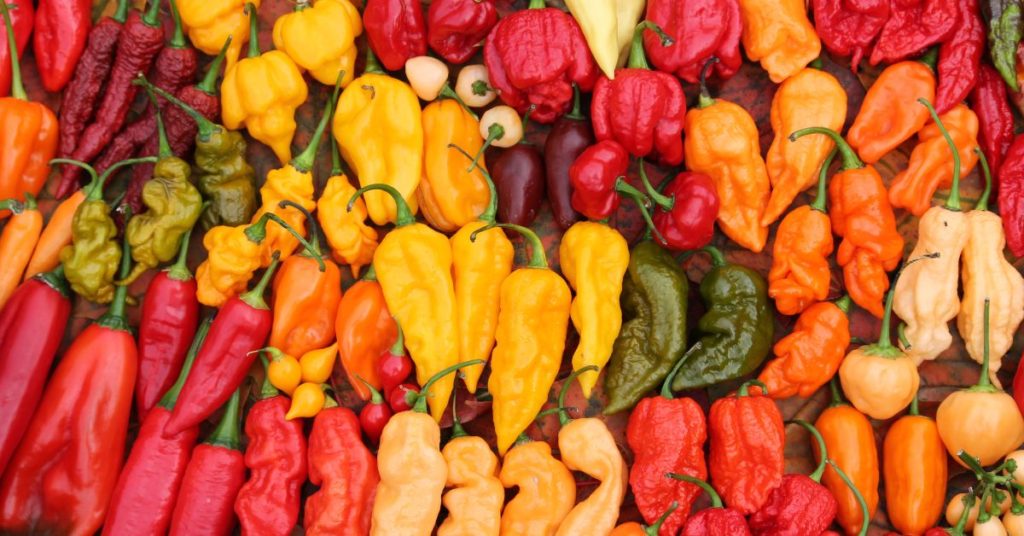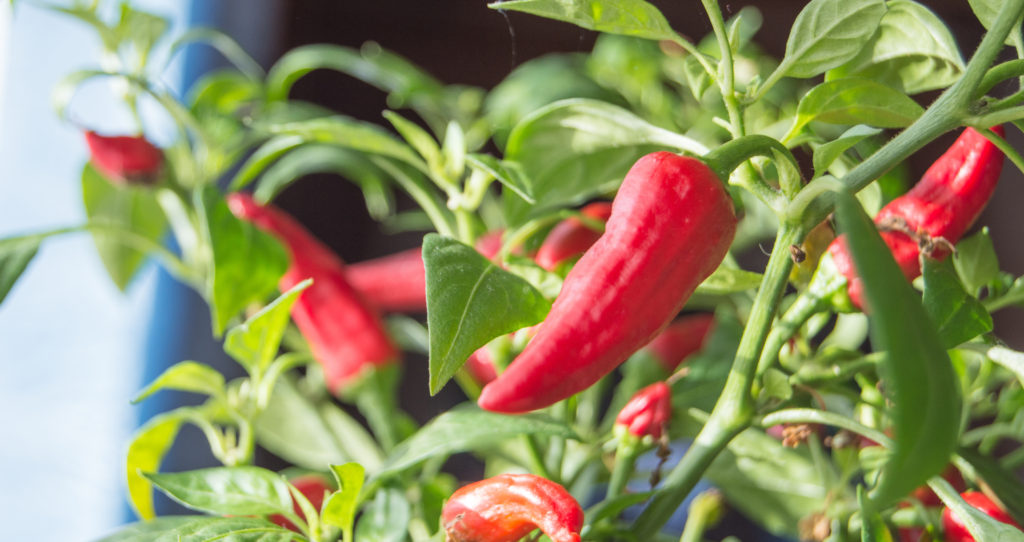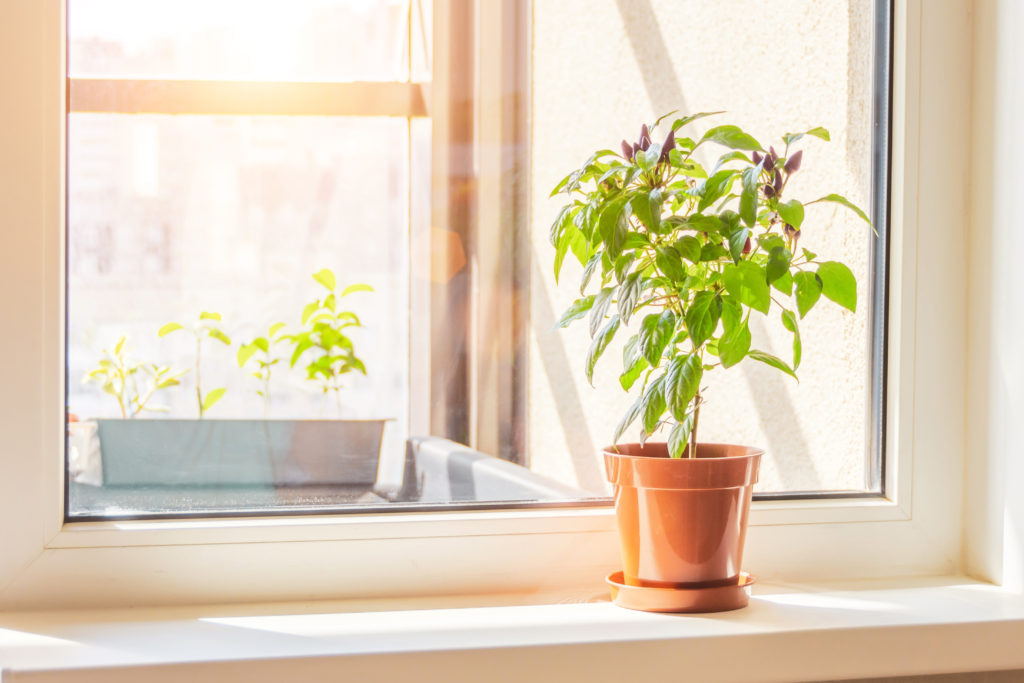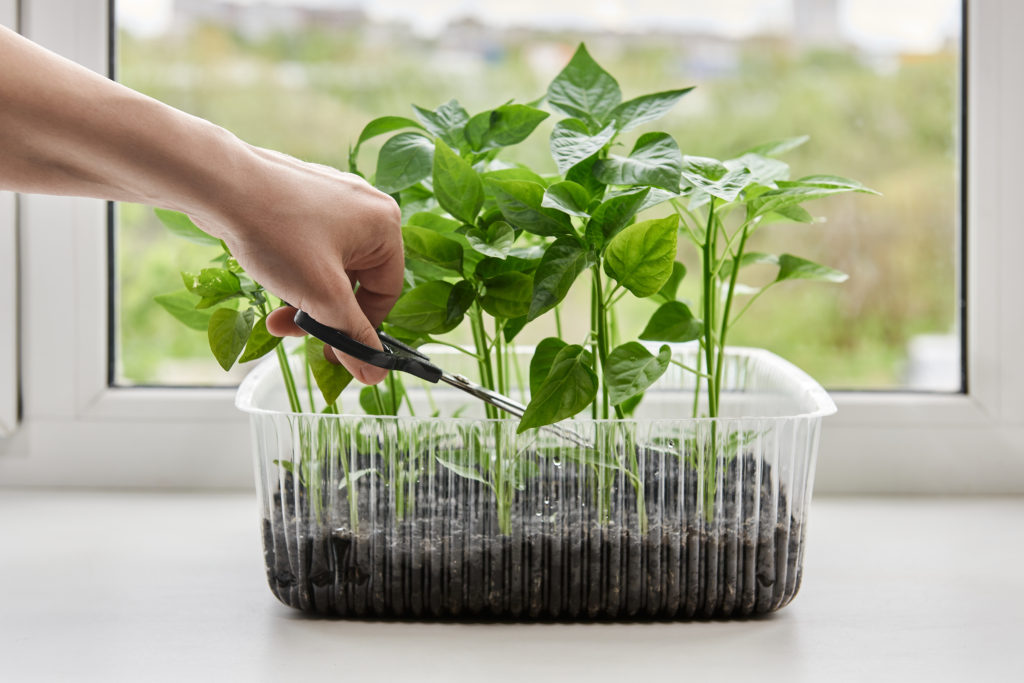Growing chili plants indoors can liven up your home and provide a year-round source of your favorite peppers. But will chili plants survive indoors, and what should you pay attention to?
Chili plants are well-suited to growing indoors. The best indoor chili cultivars are those, that stay smaller and develop smaller roots. Provide your chili plant with at least 6 hours of sunlight, but up to 12 hours is better. As well, they need well-draining soil and a good watering schedule.
We are going to cover how to care for chili plants indoors. Additionally, we will discuss the best chili plants for indoor growth.
Growing chili plants indoors

Nearly every species of chili plant is suited to growing indoors year-round. The only major concern you have to watch out for is not having enough light for them to grow or limited space.
To avoid the risks of outdoor weather changes, you can grow your plants strictly indoors.
Your chili plants need at least 6 hours of sunlight. You can support their growth with artificial light or by giving them a sunny place on your windowsill.
You will have to maintain a room humidity of at least 50%. Dry air will cause your chili plants to wither quickly.
Optimal results for your indoor chili plant are achieved when the temperature is around 26ºC (78ºF). However, avoid temperatures below 12ºC (54ºF) and over 30ºC (86ºF) because this will cause damage or reduce your yield.
If your indoor temperature is too cool, you can use a heat mat to ensure your chili plants have the temperature they need for optimal growth.
The soil will need to be a well-draining type, combined with a pot that offers sufficient drainage as well. You can also add compost to the soil when planting them to add extra nutrients.
You will have to water your plant a couple of times a week, allowing it to mostly dry in between watering. Check down about 5 cm to ensure the soil is dry before adding any water.
You will need to water your chili plants when the soil is slightly dry. Ensure that you do not overwater them, or you risk causing root rot.
Will chili plants survive indoors?

If you’re looking to add some spice to your life, then growing chili peppers indoors is a great option.
One of the best things about chili plants is that they are very easy to care for. They don’t need a lot of attention or water, and they can tolerate some neglect. When grown indoors, chili plants will do best in a bright, sunny spot.
If you can provide them with at least six hours of direct sunlight each day, they will thrive. But even if you can only give them a few hours of sunlight, they will still do well.
Chili plants can be susceptible to pests and diseases, but if you keep an eye out for problems and act quickly, you can usually keep them under control.
The most common pest is the aphid, which can suck the sap out of chili plants and weaken them. If you see aphids on your chili plants, you can spray them with an organic insecticide.
And finally, don’t forget to harvest your chilies when they’re ripe!
Best indoor chili plants

The best chilies to grow indoors are the smaller hot varieties and ornamental ones. They are often grown in containers.
Great for indoor growth are the following varieties:
- Pequin peppers
- Chiltepins
- Habaneros
- Thai pepper
- Loco pepper
- Mirasol pepper
- Cayenne
- Apache
- Fuego
Keeping a chili plant healthy indoors

As long as you provide the right conditions for your chili plants, you can grow them indoors year-round. They have specific requirements that must be met to grow successfully.
You must provide adequate light. If your windowsill is not providing enough light, you will need to compensate. The best is to use a suiting artificial light source.
Chili plants require a hot and humid environment. Consider using a heat blanket to warm the plant if the room is too cool. Additionally, using clay or terra cotta pots will help insulate the plant to retain warmth.
To keep the humidity in the room up, consider adding a water fountain or placing water bowls on the radiator. Anything too dry will cause your plants to wither.
You also need to ensure you are providing the correct amount of water, only watering when the soil is slightly dry. Following these directions will help to prevent root rot.
You can switch your plants from indoor to outdoor living and back again easily.
How many sunshine hours do chili plants need?

Chili plants do best in full sun. They will still grow in semi-shade; however, they will not produce as many fruits.
Growing chili plants indoors can be slightly problematic if you do not have enough access to natural lighting.
If your windows face the wrong direction or just do not get adequate light, you will have to supplement the lighting source with artificial light or your plants will not thrive.
Pruning and fertilizing indoor chili plants

If your chili plants get too tall or are not producing enough fruit, you can prune them back to encourage bushier growth.
You can prune your chili pepper plants three different times: early in the season to improve pepper quality, later in the season to make peppers ripen faster, or when you’re cultivating chilies in pots, so you’ll have an advantage next year.
When chili plants are in full light, they thrive whether they are pruned or not. Pruning is not required, but can support growth and production when the moment is right.
You may also trim the lower leaves if they are becoming dirty, or you can prune them down to make the plants more compact. As well, if you prune your pepper plants’ first blooms, the plant will grow more strongly.
You can use tomato fertilizers, compost, and well-rotted manure to help your chili pepper plants grow.
A general 5-10-10 fertilizer is well-suited to for your pepper plants. Before transplanting, slowly work the fertilizer into the soil, so that 3 pounds cover 100 square feet.
It is ideal to fertilize the chili plant every two weeks afterward. Once they start producing fruit, switch to a fertilizer that’s high in potassium.
Fertilizing regularly will stimulate better growth.
Final thoughts
Growing chili plants indoors can be a very rewarding experience. Many species offer greenery and bright colors to liven up your home. All of them provide access to fresh peppers whenever you want them.
The care for them is straightforward, and it is even easy to switch between indoor and outdoor maintenance. Chili plants are an excellent choice for an indoor plant lover.



